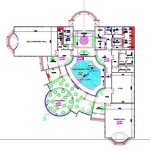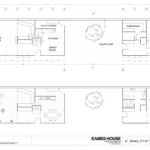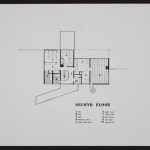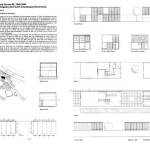Winter Bird House Plans
Winter presents unique challenges for birds, including scarce food resources and frigid temperatures. Providing supplemental food and shelter can significantly improve their chances of survival. Building or purchasing a winter birdhouse offers a vital refuge from the elements and can encourage birds to remain in an area, brightening even the dreariest winter landscape.
Winter birdhouse plans differ slightly from those intended for spring nesting. The critical distinction lies in prioritizing insulation and protection from the wind, rain, and snow. While ventilation remains essential to prevent moisture buildup, the overall design focuses on warmth and security.
Several factors contribute to an effective winter birdhouse plan:
Size and Capacity: Roosting boxes, designed for multiple birds to huddle together for warmth, are generally larger than traditional nesting boxes. Avoid overcrowding, however, as excessive competition for space can negate the benefits of shared body heat. The specific dimensions depend on the targeted bird species, but a larger floor area is generally preferred for winter roosting.
Insulation: Thick walls made from materials like cedar, cypress, or pine offer natural insulation. Adding an extra layer of insulation inside the walls, such as cork or thin sheets of foam, can further enhance warmth retention. Avoid using materials that might trap moisture, such as fiberglass insulation.
Entrance Hole Placement and Size: Position the entrance hole near the top of the box. This placement allows warm air to rise and remain trapped inside, while preventing drafts. The entrance hole should be just large enough to admit the target bird species, minimizing heat loss and preventing larger predators from entering.
Draft-Proofing: Ensure all joints and seams are tightly sealed with weatherproof sealant. This prevents cold air from entering and warm air from escaping, maintaining a stable internal temperature. Adding a small awning or overhang above the entrance hole can further deflect rain and snow.
Ventilation: Despite the emphasis on insulation, proper ventilation remains crucial. Small ventilation holes, strategically placed near the top of the box, allow for air circulation without compromising warmth. These holes help to prevent the buildup of moisture from respiration, which can create a damp and unhealthy environment.
Perching: Instead of traditional perches, consider providing small ledges or roughened interior walls to give birds secure footing without protruding perches that can conduct cold.
Placement and Mounting: Choose a sheltered location, protected from prevailing winds and heavy snowfall. Mount the birdhouse on a pole or tree, ideally facing south or southeast to maximize sun exposure. Avoid placing the box in locations susceptible to direct, strong winds or where it might be exposed to excessive moisture.
Maintenance: Regularly check the birdhouse for damage or signs of wear. Clean out any debris or droppings periodically to maintain a healthy environment. Ensure the entrance hole remains clear of obstructions, such as snow or ice.
Beyond the construction of the birdhouse, consider the specific needs of the birds you intend to attract. Different species have different preferences for house dimensions, entrance hole sizes, and perching arrangements. Researching these preferences is essential for building a successful winter birdhouse.
Numerous online resources and books provide detailed winter birdhouse plans, tailored to specific species. These resources often include diagrams, material lists, and step-by-step instructions. Choosing a plan appropriate for your skill level and available tools ensures a successful building experience.
Building a winter birdhouse offers not only a rewarding DIY project but also a valuable contribution to the well-being of local bird populations. By providing shelter and warmth during harsh weather conditions, you can help these creatures survive the winter and thrive in the coming spring.
Once the birdhouse is built and installed, it is important to avoid disturbing the birds. Observe from a distance and allow them to acclimate to their new shelter. Regularly replenishing a nearby feeder with high-energy food sources, such as suet, seeds, and nuts, can further support their survival during periods of food scarcity.
Consider the local climate and prevailing weather conditions when choosing materials and designing the birdhouse. In areas with heavy snowfall, a sloped roof helps to shed snow and prevent accumulation. In regions with frequent rainfall, ensuring adequate drainage and waterproofing is paramount.
While pre-built birdhouses are readily available, constructing your own allows for customization and ensures the use of high-quality materials. This can contribute to the longevity and effectiveness of the birdhouse, providing a safe haven for birds for many winters to come.

Winter Bird Warmer Plans Houses House Diy

Bird Roost Plan One Nighttime Shelter For Winter Birds House Plans Free Kits

Easy Winter Bird House Plans Roost Box Free

Wren Nest Box 70birds Birdhouse Plans Index

Attract Birds With Roost Boxes All About

Building A Winter Birdhouse

Winter Birdhouse Woodburning Tutorial First Steps Pyrography

Shelter From The Storm Winter Roosting Boxes Gardenista Bird House Kits Feeder

25 Free Bird House Plans To Welcome Feathered Friends Your Garden Insteading

Bird Roost Nighttime Shelter For Winter Birds House Kits Houses Diy








